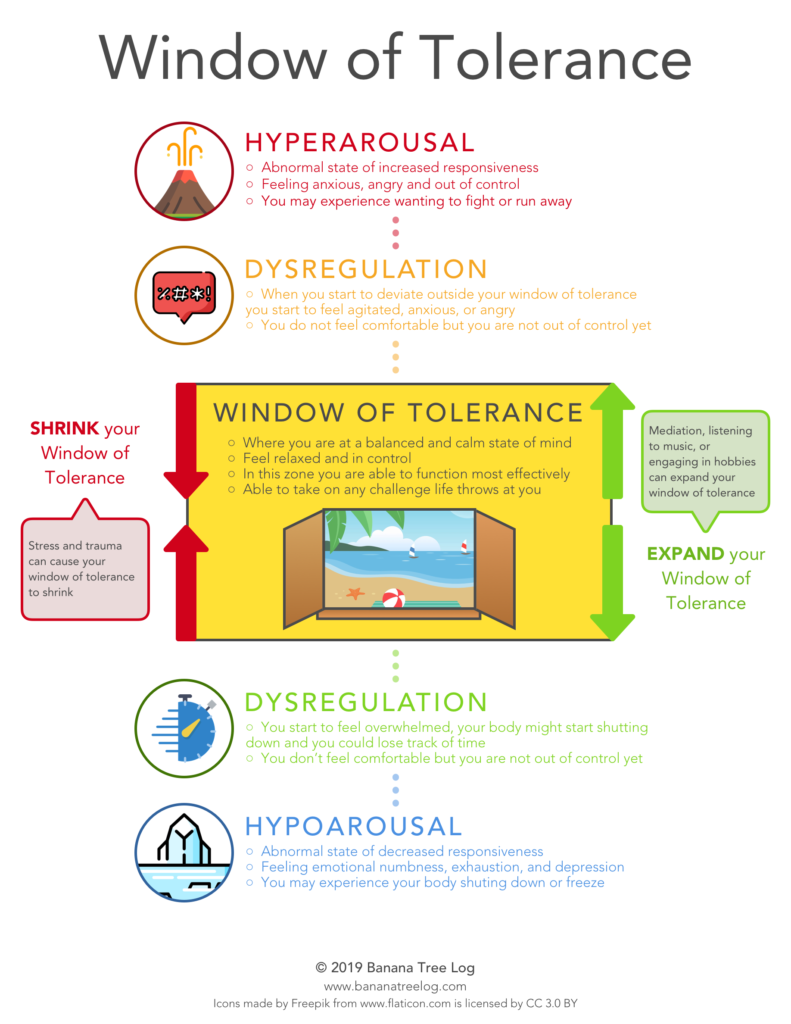What is the Comprehensive Resource Model(CRM)?
The Comprehensive Resource Model is a therapeutic approach to help clients re-process and release the effects of traumatic events which they have experienced. This model was developed by Lisa Schwarz, an American psychologist who has for 28 years specialised in the field of severe dissociative disorders. This model was developed from looking at the neurobiology of the fight-fight-freeze response that occurs during trauma.
The Window of Tolerance
The ‘window of tolerance’ is used to describe when your brain and body is at an optimum state to take in and process information. In this state a persons brains can take in and process information. This allows for calm and rational decision making.

Becoming hyper-aroused can lead to anxiety, panic attacks, racing thoughts and hyper-vigilance.
Hypo-arousal is similar to the freeze response, leading to feelings of emotional numbness, emptiness and dissociation.
Being in this survival, fight/flight/freeze, state makes it very difficult to process information since the body/brain is in a state where survival is most important.
If someone has experienced long term stressful situations or trauma the “window of tolerance” may be narrower, making it harder to stay in the window or tolerance and may lead to people going into a fight/flight/freeze response. This can lead to panic attacks in logically safe situations or disassociating to cope with mildly stressful situations. For more information see here.
The comprehensive resource model aims to give clients the resources clients to stay within and widen the window of tolerance and, through the use of bilateral sounds and guided imagery, process past traumatic events and heal parts of yourself.
What does a CRM Session Look like?
Only after a safe enough relationship is built up between client and therapist can CRM work begin. Different breathing skills are taught and used to send signals to the body that this is a safe situation. Different guided imagery and eye positions are used to give a feeling of safety and stability that can be used outside of therapy as well.
For more information see comprehensiveresourcemodel.com